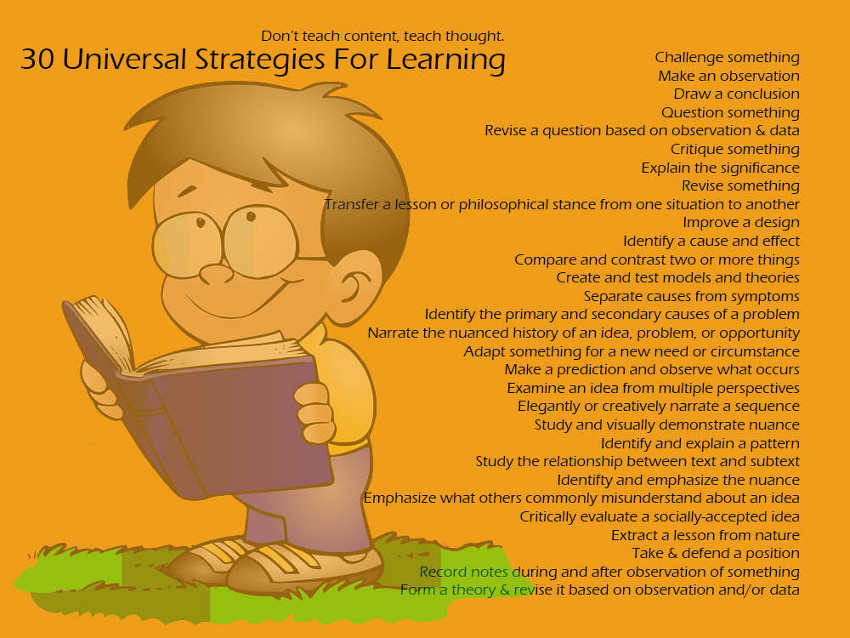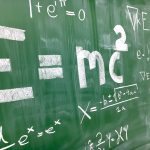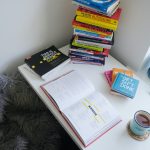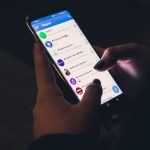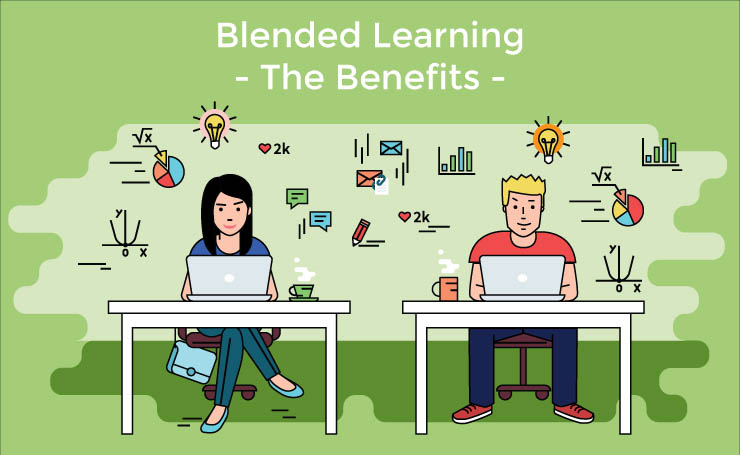Every person has their own way of learning. Some are visual learners, others auditory, and a small percent are kinesthetic.
But this does not mean that one person should be exclusively visual, auditory or kinesthetic because a lot of people do combine these three types of learning styles to fully maximize their advantages.
It’s just a matter of adapting to the way things are being taught in school.
But did you know that apart from these different styles, there are also different learning strategies that are applied from time to time?
Learning styles in a way help in the accumulation of knowledge, but Strategies for Learning is something that’s far different.
Think of them as a way of training the brain in improving its reception to ideas, in analyzing concepts, and in integrating inter-related disciplines.
According to an article was written by Terry Heick, there are 30 Universal Strategies for Learning, and these are very important to be identified especially by teachers in order to help students more effectively. Knowing these Strategies for Learning can be used to guide students in learning different topics.
These can serve as cues for educators on how they would start their lessons, and what sort of activities to give to their students. Heick’s further extended that applying these strategies would help students improve on their self-directed learning, a process that he sees as the future of learning.
Here’s the list adapted from Terry Heick’s article “30 Universal Strategies for Learning”.
-
Challenge Something.
-
Make an Observation.
-
Draw a Conclusion.
-
Question something.
-
Revise a question based on observation and data.
-
Critique something.
-
Explain the significance.
-
Revise something.
-
Transfer a lesson or a philosophical stance from one situation to another.
-
Improve a design.
-
Identify a cause and effect.
-
Compare and contrast two or more things.
-
Create and test models and theories.
-
Separate causes from symptoms.
-
Identify the primary and secondary causes of a problem.
-
Narrate the nuanced history of an idea, problem or an opportunity.
-
Adapt something for a new need or circumstance.
-
Make a prediction and observe what occurs.
-
Examine an idea from multiple perspectives.
-
Elegantly or creatively narrate a sequence.
-
Study and visually demonstrate nuance.
-
Identify and explain a pattern.
-
Study the relationship between text and subtext.
-
Identify and emphasize between the nuances.
-
Emphasize what others commonly misunderstand about an idea.
-
Critically evaluate a socially-accepted idea.
-
Extract a lesson from nature.
-
Take and defend a position.
-
Record notes during and after observation of something.
-
Form a Theory and revise it based on observation and/or data.
Using these “Universal Strategies” can be very advantageous towards both the teacher and the students. Students get to be learning things on their own, at their own pace, and with their own interest, while teachers can be more of “learning facilitators” as how Heicks illustrated.
After all, learning should always be a two way deal, where students and teacher have a healthy division of labor. They each should provide their own contribution in every single session and each should be able to pick up something new from each other.
These strategies in a way apply to both the teacher and the students. Each of them could be able to utilize these in order to improve their learning experiences.


